
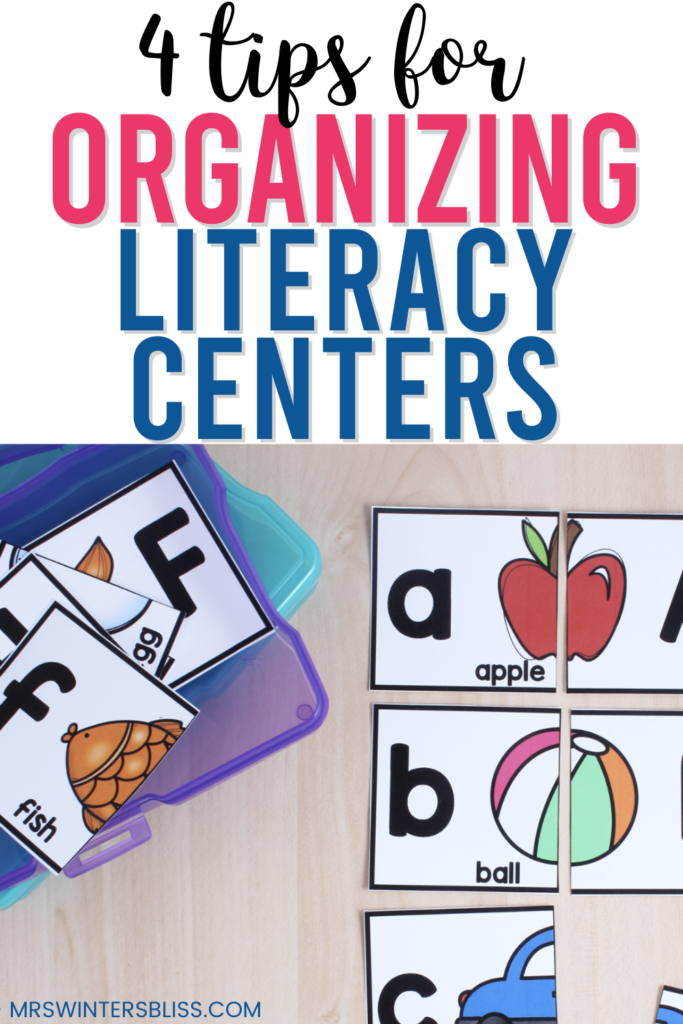
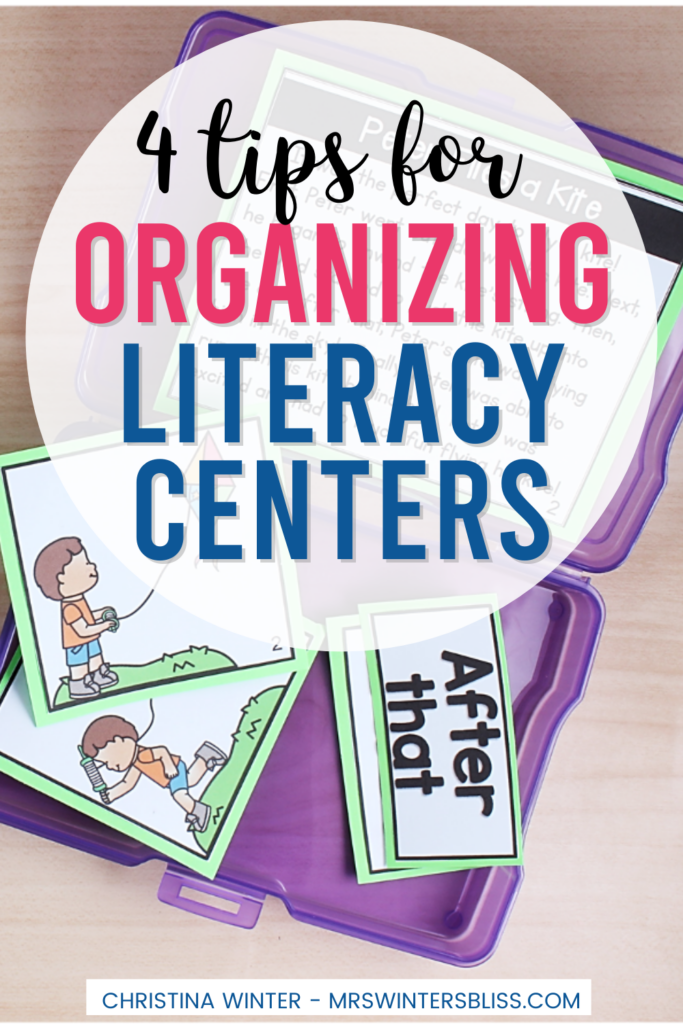
In this post I’m sharing 4 helpful tips for organizing literacy centers and activities in the kindergarten, first and second grade classroom.
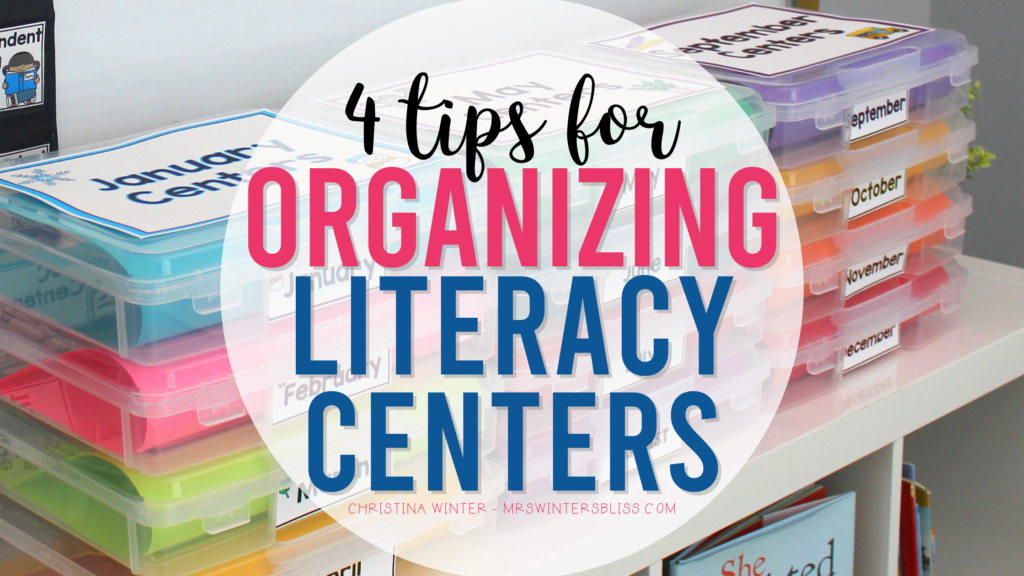
I love literacy centers….but it hasn’t always been that way. Yep, during my first years in the classroom literacy centers weren’t the best part of my day. I made a lot of no-so-great choices and learned from trial and error – sorry kids!
One of the bigger mistakes I made in the early years was that I spent a lot of time planning and prepping activities, but I didn’t think enough about HOW they would be organized in my classroom. Simply preparing the activities wasn’t enough. There was more I needed to consider in order for my literacy centers to be successful.
Today I’m happy to share 4 things I learned you must consider when organizing your literacy centers.
Four Things To Consider When Organizing Your Literacy Centers
1. Your Classroom Set-Up
These days classrooms come in all shapes and sizes! We have different amounts of storage space and pieces of furniture- and that’s okay! What matters is that you are intentional about how you use the space you do have. As part of my planning I think about what furniture and shelving I have in my classroom. I consider where it is placed and how I will use it. I map out how students will rotate and flow from center to center, and work make that route free from extra distractions!
2. Where to Place Literacy Center Activities
I’m also thoughtful about where I place specific literacy center activities in my classroom. For example, I like to place my listening center near the table where I work with my small group. Students wear headphones in the listening center, so it’s practically silent and doesn’t distract my small group. Another bonus is that if a student has a technology problem, I am right nearby to quickly help them solve it and get back on task. Finally, being close to the computer station also allows me the ability to keep an eye on what my students are accessing online.
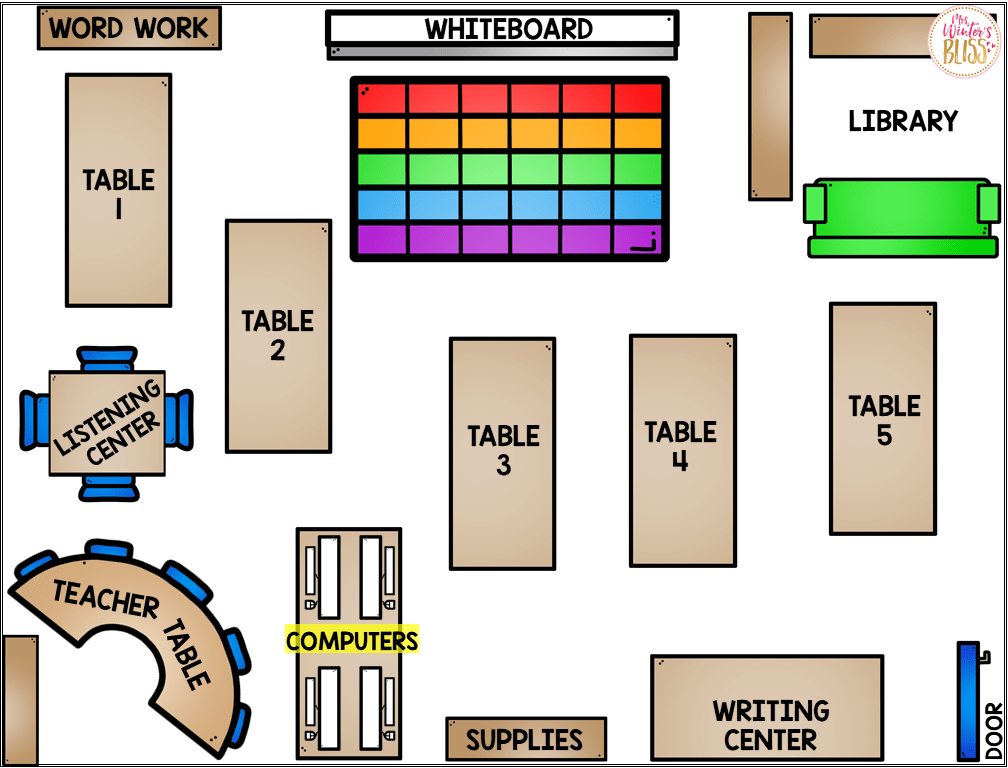
I also discovered that pushing the writing center table against a wall is very helpful! The wall is a great place to hang anchor charts, word walls or sound walls for my students to refer to while they work. Additionally, I’ve noticed the students are better focused when facing the wall because they are less distracted by what other students are doing at their centers.
The rest of my centers are thoughtfully spaced around the classroom in labeled baskets that hold all the materials. I keep each center in the same location throughout the year to help students maximize their time learning.
3. How to Organize Materials for Literacy Center Activities
I do my best to choose literacy center activities that don’t require a lot of materials, but of course some do have materials and they do need to be organized!
The first thing I do is explicitly teach students routines and procedures for taking out materials, using them and storing them when not in use. If necessary, I may choose a particularly responsible student and train them to manage centers that have a lot of materials.
I always make sure that anything a student will need to complete the activity is at the center or in the bin. I want to avoid any extra movement around the room to gather supplies!
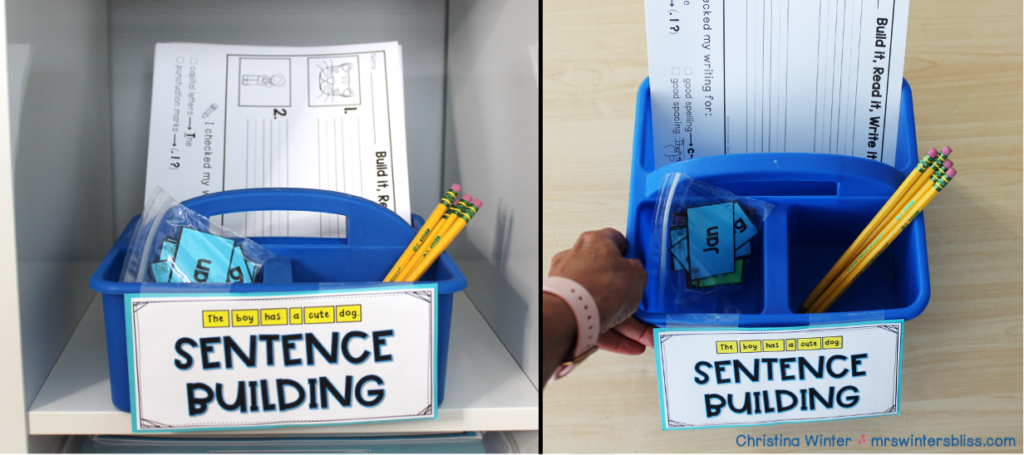
Another tip… try to keep the materials you use in your centers consistent. For example, I teach students to use sheet protectors and dry erase markers to complete activities. This helps to cut back on copies and saves prep time!
Another great option, if you are looking to limit materials, is to use digital literacy center activities. These days there are also so many wonderful digital literacy centers. One of my favorite digital activities are Word Sorts. Word sorts require students to think about how words work by drawing their attention to common spelling patterns. Students are given a set of words that all have something in common and asked to sort them by the common feature. It is an engaging, SoR-aligned literacy center that requires nothing more than a tablet or computer!
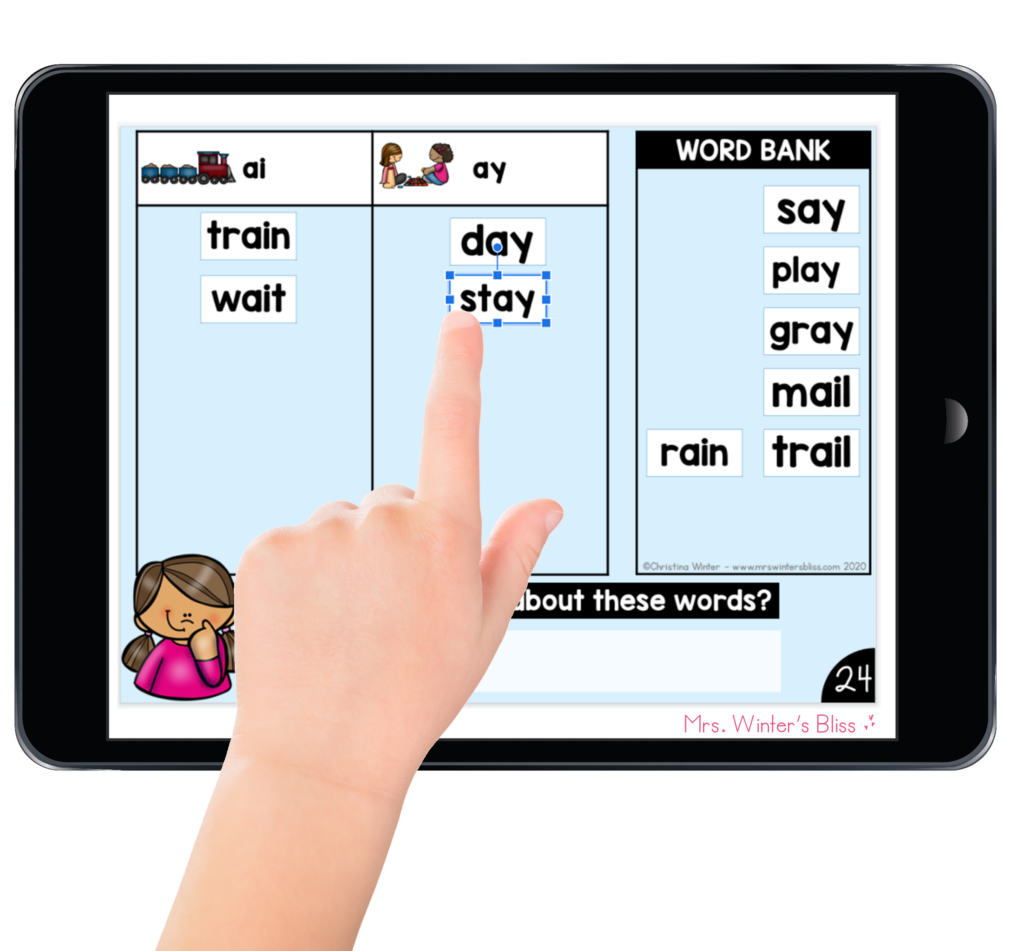
4. Where Students Will Work
I’ve shared before that one of the big reasons centers are so powerful is that they offer students choice. Choice is highly motivating for students. When students have some choice in how they complete a task they are more likely to take ownership over their work and will perform better on it. I try to give them choice in the activities they complete, but also where they complete those tasks.
Although I have “designated areas” for centers my students know that they are free to move to any area of the classroom if it helps them be productive in their work. On any given day, you will see my learners standing, sitting on the floor or at their tables, but all absorbed in their tasks.
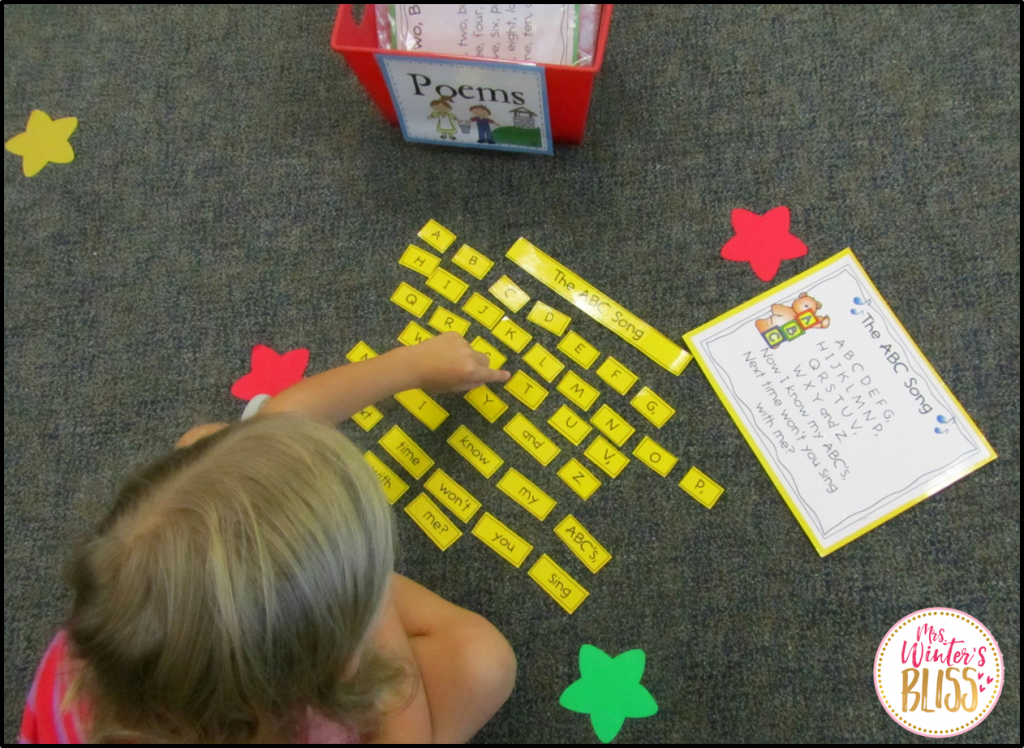
I hope the information I’ve shared today is helpful as you begin to plan and organize your literacy centers! With thoughtful considerations and intentional choices, centers can become an awesome part of your day!
Feeling overwhelmed in trying to plan effective literacy centers or exhausted from all the center chaos many teachers experience?
Imagine there was an easy, foolproof process for running literacy centers without the circus, noise, or interruptions…
AND if you could get new, low-prep Science of Reading-aligned centers every month…plus detailed, specific trainings…would you finally feel confident about doing centers in your classroom?
All of this awaits you inside.my K-2 membership, Leaders of Literacy!
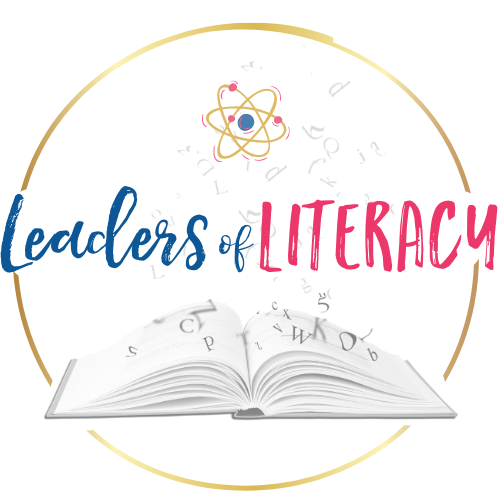
.
Join the waitlist and be notified first with more details when it’s open for enrollment!
*87% of the time, school spam filters block emails like mine 😩 Please use a personal address so you don’t miss a thing!
a
n









